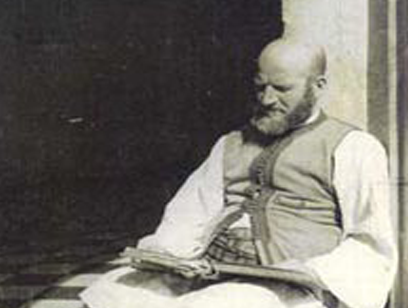The scholar and judge, Sidi Ahmed Skirj, was raised in a scholarly and Sufi environment and received his education in the city of Fez. He married for the first time in 1902 to Lady Fatima, the daughter of Sidi Makki bin Shaqroun, and they had a son, Abdel Karim. During the birth of his son, he suffered from a severe illness, while his wife faced significant difficulties during the delivery. In 1909, he moved to Tangier to work at the Deputy’s House, but he couldn’t adapt to the city’s different nature and left the job shortly after. He married again in 1910 to his cousin’s daughter in Tetouan, and they had a son, Mohamed, but he divorced her at her father’s request.
Throughout his life, he invited scholars and sheikhs to meet and collaborate. One of his notable journeys was to Meknes, where he met the head of the Alawi Sharifs and wrote the book Al-Rihla Al-Zidaniyya (The Zidanian Journey). He also traveled to Oran at the invitation of his friend, the scholar Sidi Al-Habib bin Abd al-Malik, and documented this journey in his book Al-Rihla Al-Habibiya Al-Wahraniya (The Habibi Oranian Journey). He accompanied Sidi Mahmoud Al-Tijani bin Sidi Mohammed Al-Bashir bin Sidi Mohammed Al-Habib bin Sheikh Sidi Ahmed Al-Tijani (may Allah be pleased with him) on a trip through Moroccan cities, but he had to return to Fez before completing the journey. He documented this in his book Al-Ghayat Al-Maqsud Bil-Rihla Ma’a Sidi Mahmoud (The Ultimate Goal of the Journey with Sidi Mahmoud).
Skirj held several positions, including working as a secretary for the Pasha of Tangier and then as the overseer of the Awqaf (endowments) of Fez. The Sharifian government appointed him to represent them in congratulating King Hussein on the independence of Hijaz, and he wrote a book about this journey titled Al-Rihla Al-Hijaziyya (The Hijaz Journey). He was then appointed as a judge in Oujda in 1919, but he requested to be relieved due to the lack of support for truth and virtue. He then moved to Rabat, where he worked in the Supreme Court, and later became a judge in both El Jadida and Settat, holding this position until his death in Marrakesh in 1944.





